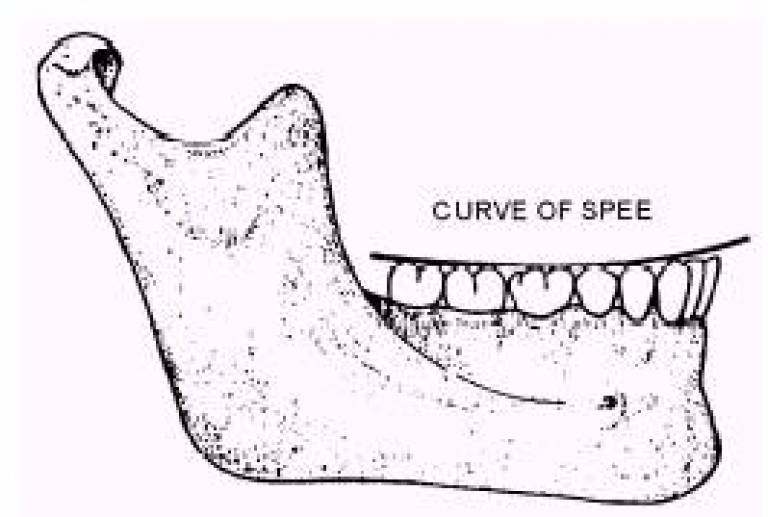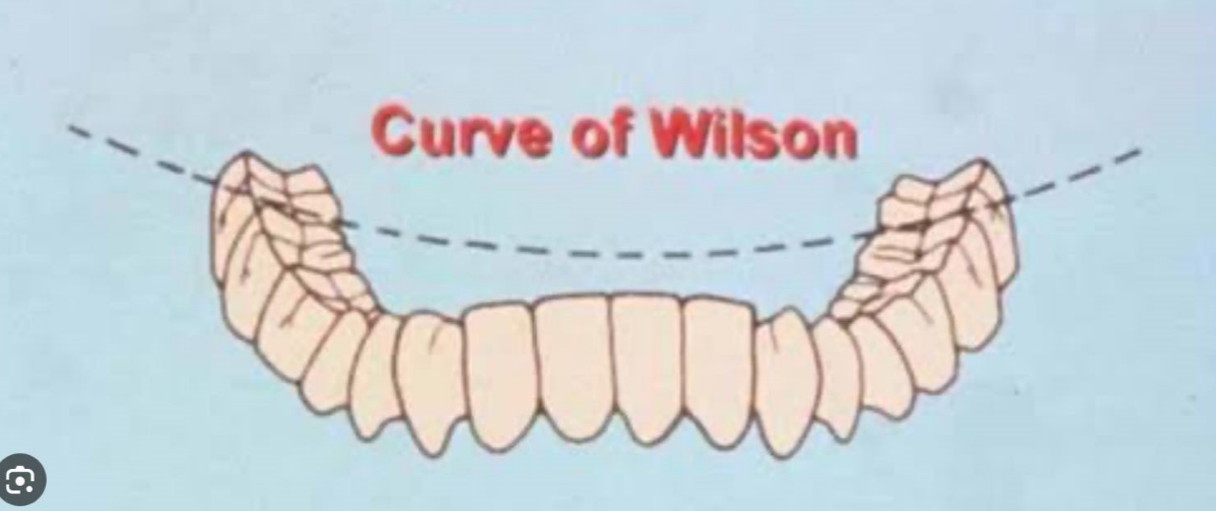ORAL PHYSIOLOGY PRELIMS
1/107
There's no tags or description
Looks like no tags are added yet.
Name | Mastery | Learn | Test | Matching | Spaced |
|---|
No study sessions yet.
108 Terms
Oral Physiology
The science that deals with the functions of the human masticatory apparatus and its parts, and of the physical and chemical factors and processes involved.
Clinical Functions
The principal in which the oral structures participate include deglutition, mastication, respiration, and speech.
Components of the HMA
Dental, neuromuscular, skeletal, teeth, bones, TMJ, nerves, muscles, blood supply, oral fluids, others.
Gnathology
The field of dentistry that deals with the entire chewing apparatus, including its anatomic, physiologic, histologic, and pathologic characteristics.
Mastication
The process by which food is crushed and ground by teeth. It is the first step of digestion and increases the surface area of foods to allow more efficient breakdown by digestion enzymes.
Deglutition
The process in the human body that makes something pass from the mouth to the pharynx and into the esophagus, while shutting the epiglottis and the nasopharynx.
Respiration
The process by which organisms take up oxygen and discharge carbon dioxide in order to satisfy their energy requirements.
Speech
The vocalized form of human communication based upon the syntactic combination of lexicals and names drawn from vocabularies. Each spoken word is created out of the phonetic combination of a limited set of vowel and consonant speech sound units.
Anatomic Crown
The part of the tooth covered by enamel.
Clinical Crown
Refers to any part of the tooth that sticks out into the oral cavity. It may be shorter or longer than the anatomic crown.
Active Eruption
The process whereby a developing tooth bodily moves through the jaw bone and overlying mucosa to its functional position in the oral cavity.
Passive Eruption
The process whereby the clinical crown of a tooth increases in size because of apical recession of the surrounding tissues, rather than bodily movement of the tooth.
Junctional Epithelium
A type of epithelium that forms the attachment between the tooth and the gingiva.
Primary Dentition
The first set of teeth that erupt in humans, also known as baby teeth or deciduous teeth.
Arch Measurements
Arch width, arch length, and arch perimeter are measurements used to assess the size and shape of dental arches.
Characteristics of Primary Dentition
The anatomical characteristics include:
20 in number
white or bluish white in color
having smooth labial crown surfaces
prominent cervical ridges
wider crowns mesiodistally than cervico-incisally
absence of mamelons on incisal edges
shallow molar occlusal anatomy
thin and slender roots
long roots in proportion to crown length
root furcations near crown
roots widely spread beyond crown outlines.
Sequence of Eruption
The order in which teeth erupt in the oral cavity.
Signs of a Normally Developing Primary Occlusion
Spaced anteriors
primate spaces
shallow overjet and overbite
almost vertical inclination of teeth
straight terminal plane
class I molar and cuspid relationship.
Mixed Dentition
The dentitional period in which both primary and permanent teeth are in the mouth together.
Favorable Sequence of Eruption
The ideal order in which permanent teeth should erupt in the oral cavity.
Successional Teeth
Permanent teeth that follow into a place in the arch once held by primary teeth, such as incisors, canines, and premolars.
Accessional Teeth
Permanent teeth that erupt posteriorly to the primary teeth, such as molars.
Early Mixed Dentition
The stage of mixed dentition characterized by
flaring of the maxillary anteriors
transient crowding of the mandibular anteriors
end-to-end permanent molar relationship
Ugly Duckling Stage
A transient and self-correcting malocclusion seen in the maxillary incisor region between 8-9 years of age, characterized by the displacement of the roots of lateral incisors due to erupting permanent canines.
Transient anterior crowding
Temporary crowding of the anterior teeth during the mixed dentition stage.
End-to-end molar relationship
A molar relationship where the upper and lower molars occlude directly with each other.
Resolution of distal flaring
The correction of the distal divergence of the crowns of the central incisors, resulting in a more aligned appearance.
Easement of transient crowding
The temporary crowding of teeth is relieved as the permanent dentition erupts.
Late mesial shift of permanent first molars
The movement of the permanent first molars towards the midline as the leeway space is closed.
Leeway space
The surplus space created by the difference in size between primary and permanent canines and molars.
Flush terminal plane
A molar relationship where the upper and lower second primary molars occlude in a straight line.
Mesial step
A molar relationship where the upper and lower second primary molars have a mesial relationship.
Distal step
A molar relationship where the upper and lower second primary molars have a distal relationship.
Occlusion
The contact relationships of the teeth resulting from neuromuscular control of the masticatory system.
Physiologic occlusion
A class of functional occlusion characterized by the absence of occlusion-related pathosis and minimal muscle hyperactivity.
Traumatic occlusion
A class of functional occlusion where occlusion is the causative factor in the formation of lesions.
Therapeutic occlusion
A class of functional occlusion used in treatment to counteract structural relationships related to traumatic occlusion.
Static occlusion
The contact of teeth in opposing dental arches when the jaws are closed.
Dynamic occlusion
The contact of teeth in opposing dental arches during various jaw movements.
Good occlusion
Optimal function and absence of disease in the occlusion.
Factors that Contribute to Occlusion
Functional forms of teeth, arrangement of teeth within the dental arches, relationship of the mandibular dental arch to the maxillary dental arch, relation of the mandible to the maxilla, and the TMJ, muscles, nerves, and ligaments.
Functional forms of teeth
Facial and lingual curvatures, contact areas, embrasures, interproximal surfaces, surface contact, cusp and fossa apposition, cusp and embrasure apposition, and ridge and sulcus apposition.
Crest of curvature
The highest point of a curve or the greatest convexity or bulge on a tooth.
Found in the middle 1/3 of the crown on the lingual surfaces of posterior teeth.
Contact areas
Positive contact relation mesially and distally of one tooth with another in each arch.
Stabilize the tooth within the alveolus
Help prevent food impaction and protect the interdental papilla.
Embrasures
V-shaped spaces above the contact areas of teeth viewed from the occlusal or incisal aspect. Narrowest at the contact and widening facially, lingually, and occlusally.
Interproximal space
AKA cervical embrasure or gingival embrasure. Triangular space between adjacent teeth cervical to their contact.
Surface contact
Contact of flattened or level surfaces. Mandibular cusp tip contacts the maxillary flat surface. Mandibular cusp tip contacts the mesial incline of a maxillary cusp.
Stamp cusps
Occlude in fossa of opposing teeth well within the perimeter of the crowns of teeth.
Crush and cut food as they are directed past the opposing shear cusps and cutting ridges toward an occlusal fossa.
Responsible for maintaining the vertical dimension of occlusion.
Shear cusps
Act as centric stops during contact with the opposing stamp cusps and minimize tissue impingement.
Shear the food to reduce it to smaller particles and act as grabbing cusps to grab and hold food on the occlusal table.
Give stability to the mandible by providing a tight and definite occlusal relationship when teeth occlude (maximum intercuspation).
Cusp and fossa apposition
Most effective stabilizer of alignment. Mesiolingual cusp of all mandibular molars are in apposition with the lingual embrasures of the maxillary molars.
Ridge and sulcus apposition
Triangular ridges of the buccal cusps of the maxillary molars are accommodated into the buccal grooves of the mandibular molars.
Posterior Cusp Characteristics
Each cusp has 4 ridges - outer incline (facial or lingual ridge), inner incline (triangular ridge), mesial cusp ridge, and distal cusp ridge.
Occlusal table
Area contained within the mesial and distal edges of the occlusal surface.
Supporting Cusps
They contact the opposing tooth in intercuspal position and support the vertical dimension of the face.
They are nearer the faciolingual center of the tooth than non-supporting cusps.
Their outer incline has the potential for contact. They have broader, more rounded cusp ridges than non-supporting cusps.
Robust cusps that are better suited for crushing food compared to non-supporting cusps.
Non-supporting cusps
Cusps that form a lingual occlusal line in the mandibular arch and a facial occlusal line in the maxillary arch.
They overlap the opposing teeth without contacting them.
Arrangement of Teeth within the Dental Arches
The positioning of teeth within the upper and lower dental arches.

Curve of Spee
The upwardly convex curve from the canine to the last molar in the maxilla and the downwardly concave curve from the canine to the last molar in the mandible.

Curve of Wilson
The gradual curve followed by the cusp tips of the posterior teeth when viewed from the anterior aspect.
Centric occlusion
The position of the mandible when the teeth are brought into full interdigitation with the maximal number of teeth contacting.
Overjet
The horizontal overlap between the anterior teeth.
Overbite
The vertical relationship between the anterior teeth.
Inter-arch Tooth Alignment
The alignment of teeth between the upper and lower dental arches.
Buccal cusps
The cusps of the upper teeth that are positioned lateral to the buccal cusps of the lower teeth.
Lingual cusps
The cusps of the maxillary teeth that rest in the occlusal fossae of the mandibular teeth.
importance of dental arch alignment
preventing tongue or cheek biting
breaking up food during mastication
maximizing efficiency of musculature
maintaining vertical dimension of occlusion
distributing forces of occlusion on the teeth and TMJ components.
Central fossa
The central depression on the occlusal surface of a tooth.
Facial occlusal line
An imaginary arc connecting the row of facial cusps.
Lingual occlusal line
An imaginary line connecting the central fossae.
Central fossa line
An imaginary line connecting the central fossae.
Long axis midline
The midline of each maxillary tooth that is slightly distal to the vertical axis of the corresponding mandibular tooth.
Maxillary Dental Arch
The upper arch of teeth in the mouth.
Mandibular Dental Arch
The lower arch of teeth in the mouth.
Mandibular Premolar
The premolar tooth located in the lower arch.
Maxillary Antagonist
The corresponding tooth in the upper arch to the mandibular premolar.
Mandibular Facial Cusp
The pointed part of the tooth on the outer side of the lower arch.
Maxillary Premolar
The premolar tooth located in the upper arch.
MMR
Maxillary Marginal Ridge.
DMR
Dental Marginal Ridge.
Mandibular Facial Cusp Tips
The pointed tips of the cusps on the outer side of the lower arch.
Maxillary Marginal Ridge
The ridge on the inner side of the upper arch.
Central Fossae
Depressions in the center of the upper arch.
Triangular Ridges
Ridges on the inner side of the upper arch that form a triangle shape.
Anterior Tooth Contacts
The contact between the front teeth.
Posterior Teeth
The teeth towards the back of the mouth.
Jaw Movements
Movements of the lower jaw.
Anterior Guidance
The guidance provided by the front teeth during jaw movements.
Incise Food
To cut or bite into food.
Speech
The ability to produce sounds and communicate.
Esthetics
The appearance or beauty.
Lip Support
The support provided by the lips to the teeth and mouth.
Anterior Discluders
The front teeth that prevent contact between the back teeth during certain jaw movements.
Lateral Movements
Sideways movements of the jaw.
Protrusive Excursive Sliding Movements
Forward movements of the jaw.
Relation of the Mandible to the Maxilla
The relationship between the lower jaw and the upper jaw.
Vertical Relation or Vertical Dimension
The separation or opening between the lower jaw and the upper jaw.
V.D.O.
Vertical Relation/Dimension of Occlusion.
V.D.R
Vertical Relation/Dimension of Rest Position
Vertical Relation/Dimension of Occlusion
The separation between the lower jaw and the upper jaw when the teeth are in natural maximum contact.
Vertical Relation/Dimension of Rest Position
The separation between the lower jaw and the upper jaw when the jaw and supporting muscles are in their resting position.